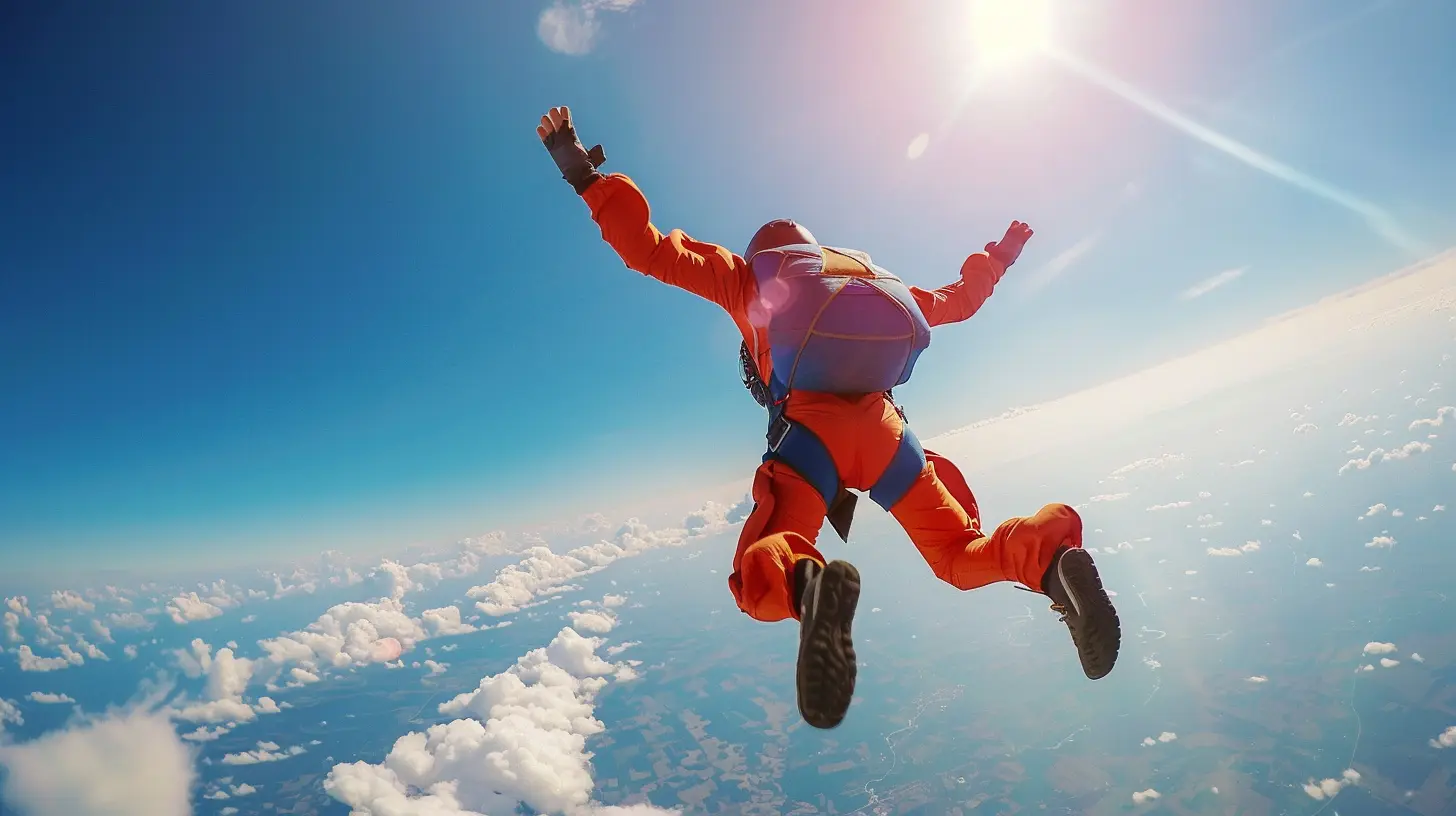Skydiving Myths Debunked: What You Really Need to Know Before You Jump
4 November 2025
Skydiving is one of those bucket-list experiences that sparks both excitement and fear. Some people dream of the adrenaline rush, while others shudder at the thought of jumping from an airplane thousands of feet in the air. But here’s the thing—much of what you’ve heard about skydiving is likely based on myths and misconceptions.
If you’ve ever considered skydiving but hesitated because of something you "heard," this article is for you. We’re going to separate fact from fiction and debunk some of the biggest skydiving myths. Let’s dive in! 
Myth #1: Your Parachute Might Not Open
Let’s tackle the biggest fear first. The idea that your parachute might fail to open is enough to turn most people away from skydiving, but in reality, parachute malfunctions are extremely rare.The Truth: Skydiving equipment is highly advanced and meticulously maintained. Every skydiver jumps with not just one, but two parachutes—a main chute and a reserve chute. If the main parachute fails (which is already unlikely), the reserve parachute is there as a backup.
Plus, modern parachutes come equipped with an automatic activation device (AAD). If, for some reason, a skydiver fails to deploy their parachute manually, the AAD will automatically release it at a safe altitude.
So, bottom line? The odds of both parachutes failing are insanely low—lower than the chances of getting struck by lightning! 
Myth #2: You Can’t Breathe While Freefalling
Some people imagine that as soon as they jump out of the plane, the wind will be so strong that they won’t be able to breathe. Sounds terrifying, right?The Truth: You absolutely can breathe during freefall! The feeling of rushing air might take a second to get used to, but your body still gets oxygen just fine.
Think about it—skydivers aren’t holding their breath for an entire 60-second freefall! The trick is to relax and breathe normally through your nose or mouth. Many first-time jumpers are just so pumped with adrenaline that they forget to breathe at first. But once they do, they realize it’s just like breathing on a breezy day—just a bit more intense. 
Myth #3: Skydiving is Only for Crazy Daredevils
Many people assume that skydiving is reserved for adrenaline junkies who thrive on extreme sports. But that couldn’t be further from the truth.The Truth: Skydiving is for everyone—not just thrill-seekers. Plenty of first-time jumpers are everyday people looking for a unique experience, pushing themselves outside their comfort zone, or even celebrating a milestone (hello, 40th birthday jumps!).
In fact, thousands of people try tandem skydiving every year, including seniors well into their 80s or even 90s. If they can do it, why can’t you? 
Myth #4: You’ll Feel Like You’re Falling
Most first-time jumpers assume that skydiving is like that gut-wrenching drop you feel on a roller coaster—but it’s not.The Truth: Freefalling at 120 mph feels more like floating than falling. Because you’re moving so fast relative to the air, the wind creates a cushion that supports your body. Instead of that stomach-drop sensation, it feels more like lying on a bed of air.
Many first-timers are shocked by how smooth it feels. You won’t get that sinking feeling—the overwhelming rush of pure weightlessness makes skydiving one of the most freeing sensations in the world.
Myth #5: Skydiving is Extremely Dangerous
No doubt, jumping from an airplane sounds dangerous. But is skydiving really as risky as people think?The Truth: Skydiving, like any adventure sport, comes with risks—but it’s actually safer than many people realize. According to the United States Parachute Association (USPA), the fatality rate for tandem skydiving is about 1 in 500,000 jumps.
To put that in perspective, you have a higher chance of dying in a car accident on your way to the drop zone than from the actual skydive itself. With highly trained instructors, advanced parachute technology, and strict safety regulations, skydiving is a well-managed and relatively safe activity.
Myth #6: You Have to Be Young and Super Fit to Skydive
Think you need to be an Olympic-level athlete to jump out of a plane? Nope!The Truth: While skydiving does have some general health guidelines, most people can safely skydive—regardless of age or fitness level. There’s no strict "fitness test" required.
Many drop zones accommodate people with disabilities, and tandem instructors do most of the work for first-time jumpers. As long as you’re in reasonably good health and meet the weight requirements (usually around 200-250 lbs, depending on the drop zone), you’re good to go.
Myth #7: Skydivers Are Reckless and Irresponsible
Hollywood often portrays skydivers as wild, reckless individuals who throw caution to the wind. But in real life, skydiving is highly structured and professional.The Truth: Licensed skydivers go through intense training and follow strict safety regulations. There are rules, protocols, and weather assessments before every single jump.
Skydiving is a sport that requires discipline, training, and respect for safety procedures. Professional skydivers don’t just jump out of planes on a whim—they plan every jump with precision and preparation.
Myth #8: Tandem Instructors Might Mess Up
If you’re doing a tandem jump, you might fear that your instructor could make a mistake.The Truth: Tandem instructors are among the most highly trained professionals in the industry. They undergo hundreds of solo jumps, rigorous testing, licensing, and continuous training before they’re allowed to take a student up in the air.
Your tandem instructor is an expert who has done this thousands of times. Their goal is to keep you safe, comfortable, and confident throughout the entire experience.
Myth #9: You’ll Land Hard and Break Your Legs
Many people picture skydivers slamming into the ground at high speeds. Let’s clear up this misconception.The Truth: Thanks to modern parachutes and landing techniques, skydivers land smoothly and safely.
Tandem skydivers use parachutes designed for soft landings, and instructors guide students on how to lift their legs during landing to absorb impact. More often than not, tandem landings are gentle slide-ins rather than rough impacts.
Myth #10: Skydiving is Just a One-Time, Bucket-List Thing
Most first-timers assume that skydiving is a "do it once and never again" type of experience. But many find themselves hooked after the first jump!The Truth: Skydiving can become an incredibly addictive sport. Many first-timers go on to get licensed, learn advanced techniques, and even make skydiving part of their lifestyle.
Once you conquer your fear and experience the freedom of freefall, it’s hard to resist coming back for more!
Final Thoughts
Skydiving comes with a lot of myths, but the real truth? It’s safer, more accessible, and way more exhilarating than people think.If skydiving has been on your bucket list, don’t let the myths hold you back. With the right instructors, top-tier equipment, and a little bit of courage, you’ll experience one of the most unforgettable adventures of your life.
So, are you ready to take the leap?
all images in this post were generated using AI tools
Category:
Extreme SportsAuthor:

Uziel Franco
Discussion
rate this article
1 comments
Kendra Gilbert
Gravity's just a suggestion, right?
November 4, 2025 at 5:08 AM

Uziel Franco
Actually, gravity is a fundamental force that affects all objects. In skydiving, it's what pulls you toward the ground!


